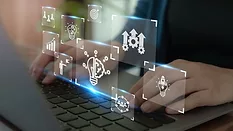
Cyber Tactics Column
Columnist and cybersecurity leader John McClurg guides CISOs through cybersecurity standards, information security tools, security frameworks and risk management techniques.
Articles
More ArticlesSign-up to receive top management & result-driven techniques in the industry.
Join over 20,000+ industry leaders who receive our premium content.
SIGN UP TODAY!Copyright ©2025. All Rights Reserved BNP Media.
Design, CMS, Hosting & Web Development :: ePublishing


